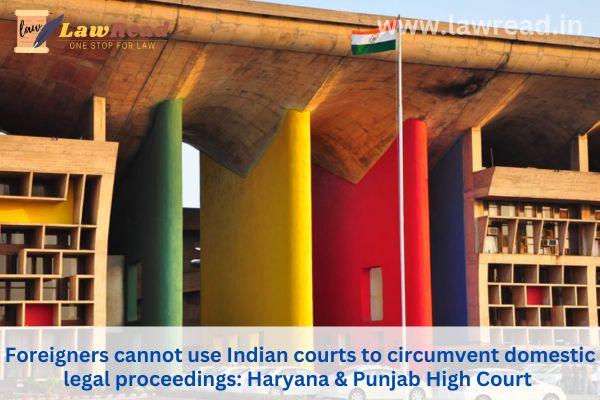Legal Trends
Here's How the Supreme Court Can Shorten Its Pendency
.jpg)
The Supreme Court of India has 81,712 cases pending at the moment. The length of time citizens must wait for their cases to be decided is increased by the Court's massive backlog. Because Chief Justices must continually strike a balance between hearing regular matters and constitutional ones, it also delays the hearing of constitutional cases that resolve significant national concerns. The Supreme Court lacks a cohesive plan to address pendency for two reasons. The first is that Chief Justices' policies don't always follow the same guidelines. Second, a lot of suggested remedies involve government intervention, which is invariably problematic (e.g., appointing more judges or creating new courts). This does not, however, imply that the Supreme Court lacks authority. The Court can minimize pendency in a number of ways on its own.
First, all Mondays and Fridays should no longer be classified as "Miscellaneous Days" by the Supreme Court. The Court selects which cases are significant enough to be heard by the Court (admission stage hearings) on Miscellaneous Days rather than making decisions on cases. According to a 2015–2019 analysis, the Court will typically select 13 cases out of 100 admission-stage hearings to be heard by the Court on merits. Out of 191 working days, the Supreme Court had 89 miscellaneous days last year. This indicates that selecting which 13% of cases to intervene in took the Court nearly 47% of its time. To put it another way, the Court took a long time sorting through cases that were primarily speculative (a separate study revealed that the average admission stage hearing lasts 93 seconds).
A solution would be for the Court to use written submissions that a judge in chambers can peruse to determine whether cases are significant enough to hear on their merits. The judge may set a hearing if the written submissions are insufficient to determine whether a case should be admitted. Simpler admission-stage cases should follow the same process that the Court currently uses for Review Petitions. The Supreme Court's rules would need to be amended in order to implement the move, but the Court is always free to do so with the consent of the Indian President. By doing this, the Court would have more time to focus on the 13% of cases it has determined require its involvement. The only long-term solution to lessen pendency is to spend more time considering which cases it has already admitted rather than deciding new cases to hear in the future.
Second, the Supreme Court ought to proactively classify and list cases that are comparable. Lawyers requesting that their cases be "tagged" with comparable cases at the court are a major component of the existing method of grouping cases (apart from the obvious situation of several appeals against the same judgment). Lawyers, however, are never able to identify which instances are identical to their own. Additionally, the current system permits attorneys to deliberately "tag" or "un-tag" cases based on whether they want to argue before a specific judge, leading to dishonest hearings. As an alternative, the Court ought to (i) proactively find and label common instances and (ii) arrange cases of a similar nature before the same bench. For instance, on the same day and before the same bench, the Court may list all land acquisition challenges from the same revenue district. Listing every pension claim made against a company collectively would be another example. This will minimize lawyer obfuscation, guarantee judges with specialized understanding hear these cases, and guarantee consistency of results on a subject.
The Supreme Court should switch to a real e-filing system as a third stage. Attorneys must submit their submissions as PDF files using the current e-filing system. Ironically, the Court itself prints these documents, which are frequently not machine-readable. An online form where attorneys can directly enter their submissions and other crucial case material would be created via a true e-filing system. By doing this, delays brought on by formatting and clerical errors like misaligned page margins, font sizes, or missing pages would be eliminated. More significantly, it would enable the Court to begin electronically gathering crucial case data (such as the revenue district, FIR number, and contested tax amount), which could then be utilized to classify related cases. These days, gathering such data requires the court to physically examine and review every file—a laborious process.
The judicial has been experimenting with using artificial intelligence (AI) to expedite judicial procedures for a number of years. In actuality, the Court has very little high-quality data on the cases it hears, and AI is primarily dependent on big, high-quality datasets. This makes it impossible to apply AI, let alone even basic data analytics, to improve the Court's operations. For example, additional data on cases could be used to identify smaller, simpler cases (e.g., small tax disputes or criminal cases where the punishment is less than 3 years), which can be rapidly disposed of in special sittings. Using data to indicate all criminal appeals for an immediate hearing where the appellant has already completed 50% of their sentence is another example. The Court's revamped case categorisation system is a step in the right direction, but much more is needed. Collecting meaningful data about cases creates endless possibilities to strategically target pendency.
Litigants may be apprehensive that the lack of oral hearings may prejudice their case. Fewer hearings may also mean fewer appearances and less money for lawyers. Indeed, when the Supreme Court abolished oral arguments for Review Petitions in the 1970s, the decision was challenged by the Bar. However, a Constitution Bench of the Court in P N Eswara Iyer v Registrar, Supreme Court of India held that the absence of oral hearings did not violate any legal rights and was a pragmatic move necessary to stop Review Petitions overwhelming the Court's docket. It also observed that countries such as the United States and the United Kingdom (which have far fewer cases than India) had dispensed with mandatory oral arguments for admission-stage matters. Australia has also recently done the same.
One of the arguments raised in Eswara Iyer was a lack of empirical data that Review Petitions were consuming a disproportionate amount of time. This brings us to our final recommendation. The Supreme Court should create a permanent, dedicated body that studies proposals to reduce pendency. Such a body should have expertise in both Supreme Court practice and procedure and data science and analytics, gather and analyse empirical data, conduct stakeholder consultations, and transparently publish pendency-reduction strategies. This will allow the Chief Justice to make informed decisions about reducing the Court's backlog and allow Judges to focus on deciding cases. Most importantly, the body should create a long-term strategy that has buy-in from all upcoming Chief Justices to ensure continuity of thought and action in tackling the Court's biggest challenge.












